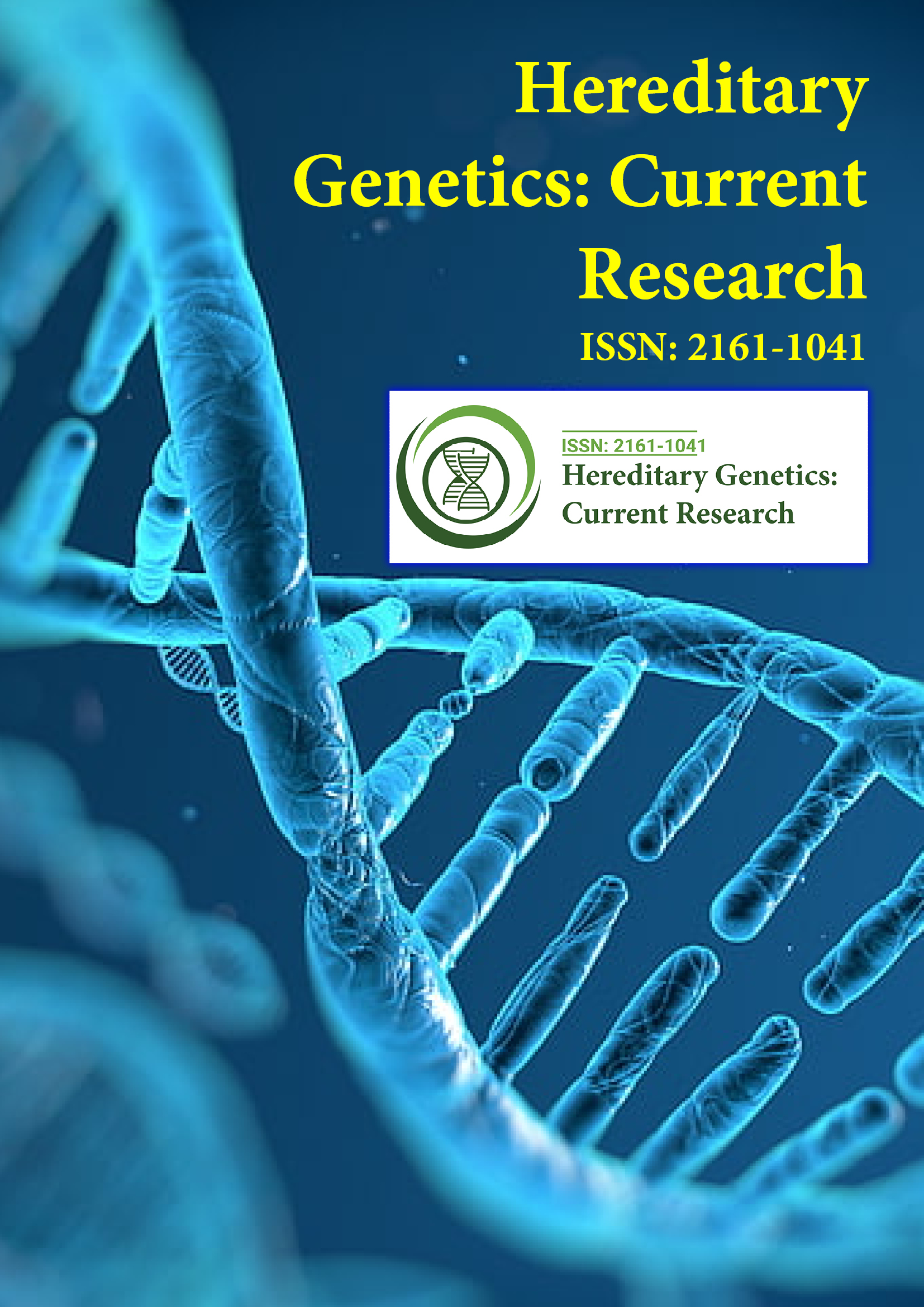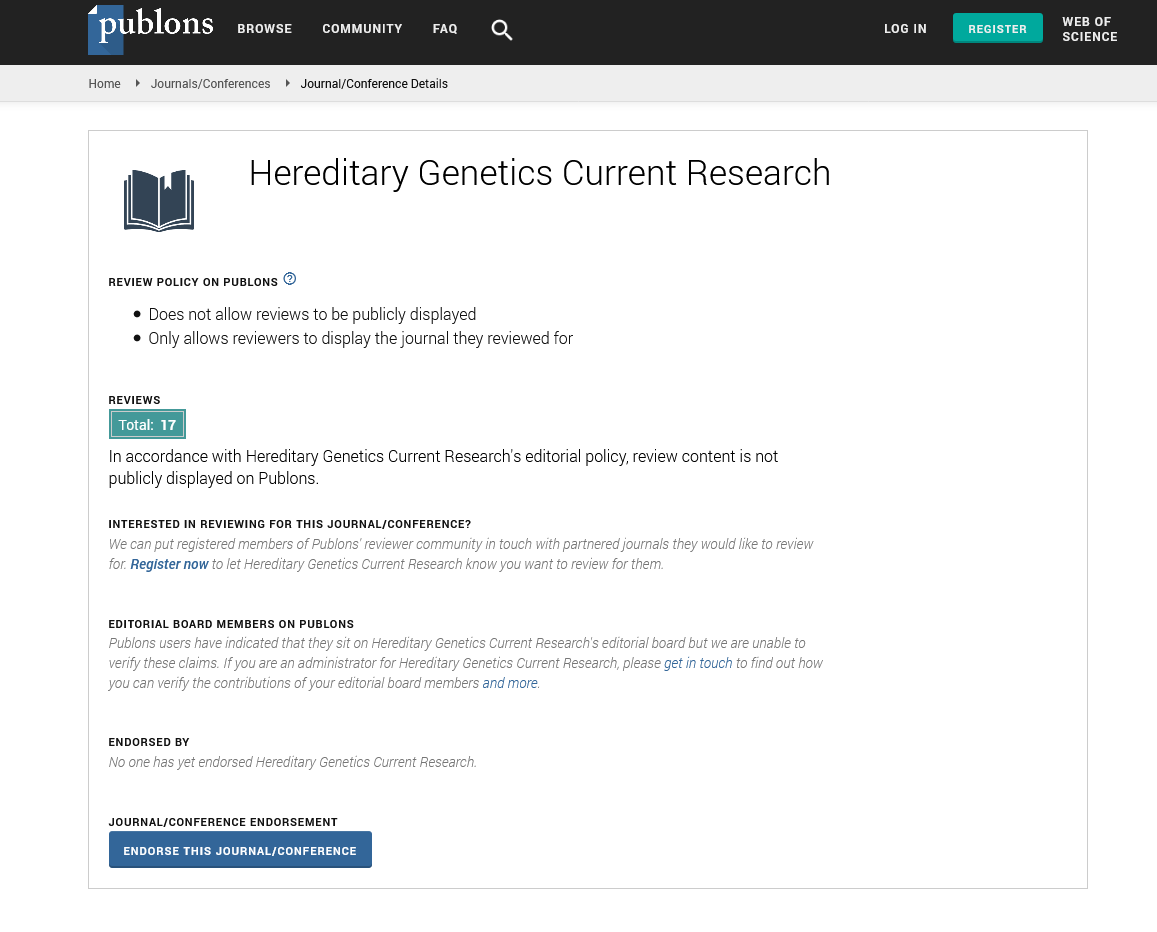Indexed In
- Open J Gate
- Genamics JournalSeek
- CiteFactor
- RefSeek
- Hamdard University
- EBSCO A-Z
- NSD - Norwegian Centre for Research Data
- OCLC- WorldCat
- Publons
- Geneva Foundation for Medical Education and Research
- Euro Pub
- Google Scholar
Useful Links
Share This Page
Journal Flyer

Open Access Journals
- Agri and Aquaculture
- Biochemistry
- Bioinformatics & Systems Biology
- Business & Management
- Chemistry
- Clinical Sciences
- Engineering
- Food & Nutrition
- General Science
- Genetics & Molecular Biology
- Immunology & Microbiology
- Medical Sciences
- Neuroscience & Psychology
- Nursing & Health Care
- Pharmaceutical Sciences
Commentary - (2025) Volume 14, Issue 1
Genetic Biofortification andAdvancing Strategies to Overcome Malnutrition - Current Insights and Future Perspectives
Francis Julius*Received: 26-Feb-2025, Manuscript No. HGCR-25-28182; Editor assigned: 28-Feb-2025, Pre QC No. HGCR-25-28182 (PQ); Reviewed: 14-Mar-2025, QC No. HGCR-25-28182; Revised: 21-Mar-2025, Manuscript No. HGCR-25-28182 (R); Published: 28-Mar-2025, DOI: 10.35248/2161-1041.25.14.298
Description
Malnutrition remains one of the most pressing global health challenges, affecting millions of individuals worldwide, particularly in developing nations. It manifests not only as undernutrition but also as micronutrient deficiencies, leading to severe health complications. Among the innovative approaches to combating malnutrition, genetic biofortification has emerged as a promising solution. This manuscript explores the genetic impact of biofortification, delves into the current insights and discusses future directions in addressing malnutrition through this approach.
Biofortification involves the enhancement of nutrient levels in crops through genetic techniques, including traditional breeding, marker-assisted selection, and modern biotechnological tools like genetic engineering and CRISPR-Cas9. The primary goal is to produce nutrient-dense crops that can improve dietary quality without necessitating significant changes in consumption patterns. By targeting staple crops consumed widely, genetic biofortification has the potential to alleviate micronutrient deficiencies at a large scale. One of the significant genetic approaches in biofortification is the identification and manipulation of genes responsible for nutrient accumulation. For instance, the enhancement of iron and zinc in rice and wheat has been achieved by overexpressing genes involved in nutrient uptake and translocation. Similarly, vitamin A biofortification in crops like sweet potatoes and maize has been facilitated by introducing genes from other species, such as the daffodil or maize itself. These efforts underscore the critical role of genetic variations in achieving biofortified crops.
Current insights into genetic biofortification emphasize its role in addressing specific micronutrient deficiencies. Vitamin A deficiency, which causes blindness and increases mortality rates, has been effectively tackled through biofortified crops like Golden Rice. This genetically engineered rice variety contains beta-carotene, a precursor of vitamin A. Similarly, iron and zinc deficiencies, which contribute to anemia and impaired cognitive development, are being addressed through crops such as iron- biofortified beans and zinc-enriched wheat. These advancements highlight the power of genetic interventions in addressing global health issues. The success of genetic biofortification relies on the exploitation of natural genetic variation and the development of novel genetic tools. Advances in genomics and high-throughput sequencing have facilitated the identification of key genes and alleles associated with nutrient accumulation. Marker-assisted breeding and genome editing technologies have further accelerated the development of biofortified crops. CRISPR-Cas9 technology has been employed to edit genes involved in phytic acid biosynthesis, thereby enhancing bioavailability of essential minerals like iron and zinc. Such innovations exemplify the integration of cutting-edge genetic tools into biofortification strategies.
Despite its potential, genetic biofortification faces several challenges. One major hurdle is the complexity of nutrient biosynthesis and regulation pathways, which are often influenced by environmental factors and genotype-environment interactions. Additionally, consumer acceptance and regulatory hurdles associated with Genetically Modified Organisms (GMOs) remain significant barriers. Public perception of genetically engineered biofortified crops varies across regions, often influenced by cultural, ethical, and scientific considerations. Addressing these challenges requires transparent communication, robust regulatory frameworks, and extensive field trials to ensure the safety and efficacy of biofortified crops.
The impact of genetic biofortification extends beyond nutrition, contributing to economic and social development. By improving the health and productivity of individuals, biofortified crops can enhance economic growth and reduce healthcare costs. Furthermore, they empower vulnerable populations, particularly women and children, who are disproportionately affected by malnutrition. These socio-economic benefits underscore the importance of integrating genetic biofortification into broader public health and agricultural policies.
Looking to the future, several avenues can enhance the effectiveness and adoption of genetic biofortification. First, interdisciplinary research is major for unravelling the complex interactions between genes, nutrients, and the environment. Collaboration between geneticists, nutritionists, agronomists, and policymakers can drive the development of more effective biofortification strategies. Second, leveraging big data and artificial intelligence can facilitate the identification of novel genetic targets and optimize breeding programs. Third, expanding the portfolio of biofortified crops to include a wider range of nutrients and crop species can address diverse nutritional needs across different regions.
In conclusion, integrating genetic biofortification with other agricultural and nutritional interventions can amplify its impact. For instance, combining biofortification with soil and crop management practices can enhance nutrient uptake and stability. Similarly, public health campaigns promoting the consumption of biofortified crops can increase awareness and acceptance. By adopting a holistic approach, genetic biofortification can become a cornerstone of sustainable nutrition strategies. Genetic biofortification holds immense promise in alleviating malnutrition and addressing micronutrient deficiencies worldwide.
Citation: Julius F (2025). Genetic Biofortification and Advancing Strategies to Overcome Malnutrition-Current Insights and Future Perspectives. Hereditary Genet. 14:298.
Copyright: © 2025 Julius F. This is an open access article distributed under the terms of the Creative Commons Attribution License, which permits unrestricted use, distribution, and reproduction in any medium, provided the original author and source are credited.

